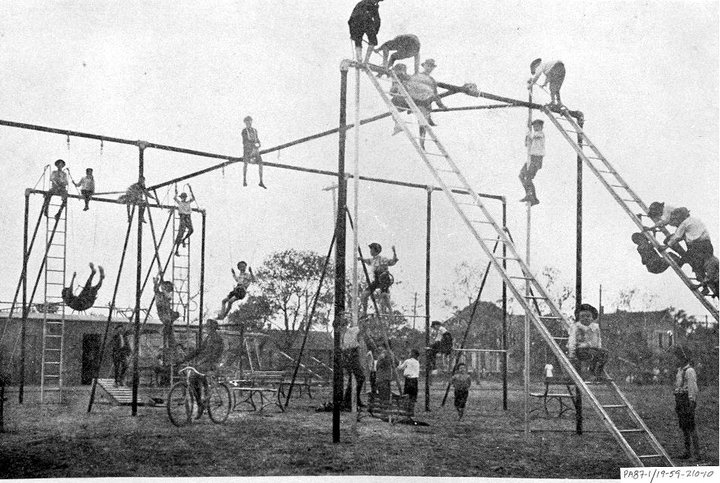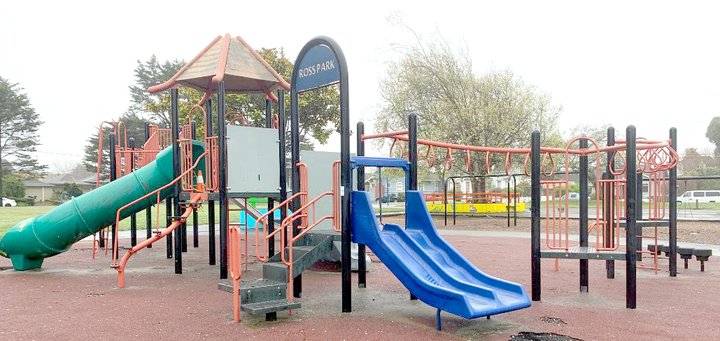“What happens in America is defined by tort lawyers, and unfortunately that limits some of the adventure playgrounds.”
— Adrian Benepe, NYC Parks Commissioner

Not a helicopter parent in sight! (Dallas History and Archives, Dallas Public Library, used with permission.)
This photo has been doing the rounds recently, with some wondering whether it can possibly be real. It sure is — thanks Snopes for the relevant link. It was taken sometime after 1909 in the Cotton Mills District of Dallas. A city report from 1923 claims that the 4.5 acre Trinity Play Park “has been a real service in reducing crime and improving the moral conditions of the neighborhood.” And movies! “Free moving picture shows are given at this park three times a week throughout the year.”
(Not to be outdone, Dallas’ three “parks and playgrounds for Negroes” also showed movies three times a week—but only during summer.)
The climbing bars in the photo are a far cry from today’s safety-and-lawsuit conscious playgrounds. Not of my day though—they look pretty similar to what my generation scrambled up, over and down. I was a scrawny kid growing up outside London in the 1940s and ‘50s, and really was the last to be picked for team sports. But I could climb—anything. Ropes, cliffs, trees, climbing bars, I was Tarzan in my own mind. The monkey bars in my primary school, age 7-10, may have been a bit (but not much) lower than the ones in the Dallas photo, but—unlike today’s soft surfaces, if you fell, you fell on hard asphalt. I don’t recall any real injuries, but that might be my selective memory. Still…
“Children need to encounter risks and overcome fears on the playground. I think monkey bars and tall slides are great…Climbing equipment needs to be high enough, or else it will be too boring in the long run.” That’s from a 2011 New York Times article, Can a Playground Be Too Safe?, quoting Ellen Sandseter, psychology professor at Queen Maud University in Norway. Makes sense to me—aren’t the dangers of challenging playgrounds outweighed by children’s growing self-confidence as they face their own fears, develop their motor skills and learn to evaluate risks, rather than avoid them?
How about softer surfaces to land on? Paradoxically, according to a UK risk management expert (you’ll find the link in the article), “Some injuries, like long fractures of the arm, actually increased after the introduction of softer surfaces on playgrounds in Britain and Australia… If children and parents believe they are in an environment which is safer than it actually is…because they don’t understand its properties, they overrate its performance.”
I wonder though, even if playgrounds magically reverted to the more challenging ones of my childhood, whether today’s uber safety-conscious parents would allow their kids to use them. According to this, 30% of parents said their worst fear was their child being abducted—way above concern about, for instance, health problems stemming from overweight or obesity, a classification that fits 1 in 3 kids in the U.S. (To put abduction in perspective, of 74 million children under 17 in the U.S., about 200 are abducted by strangers each year. Meaning that your $2 ticket is twice as likely to win the Powerball jackpot as your child getting abducted.)
Back to playgrounds: I’d be interested to hear in the comments, what your playground experience was, and when. For me, I like how the NYT writer summed it up: Better to risk a broken arm than to never climb a tree.

Safe—and boring. Eureka’s Ross Memorial Playground. (Barry Evans)
CLICK TO MANAGE